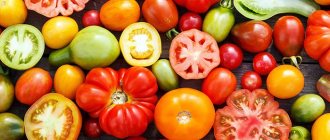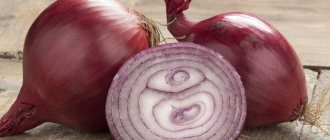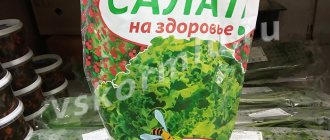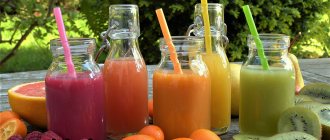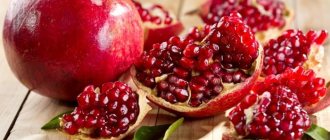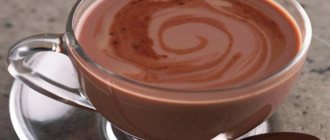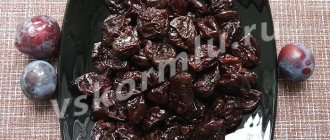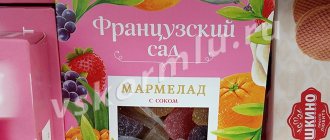What not to eat during lactation
Let's look separately at foods during breastfeeding that need to be limited or excluded. These include:
- alcohol,
- coffee,
- strong tea,
- citrus,
- semi-finished products
- onion and garlic,
- carbonated drinks,
- chocolate and confectionery,
- Exotic fruits.
Why are they dangerous? Everyone knows about the dangers of alcohol: it causes irreparable damage to health and destroys the organs of even an adult, and especially a small child. Despite the fact that alcohol passes into milk in small quantities, it is still better to abstain from drinking all types of alcoholic beverages during lactation. Coffee and strongly brewed tea contain caffeine, which, on the contrary, penetrates well into breast milk and has a stimulating effect on the baby's nervous system. Convenience foods and carbonated drinks are harmful due to their high content of dyes, preservatives, salt and sugar. These products can cause bloating and colic in the baby, and dyes and preservatives can have a negative effect on the developing nervous system.
It is important!
Seafood, chocolate, exotic fruits and citrus fruits can trigger allergies. A large amount of sweets in a nursing mother's diet can cause anxiety, bloating and colic in the baby. Onions and garlic make milk taste unpleasant, and the baby may refuse to breastfeed.
The benefits of dumplings for a nursing mother
A woman's diet during breastfeeding should be balanced. To benefit your body and your baby, a nursing mother should eat homemade dumplings.
The benefit of dumplings for a woman during lactation is to saturate the body with proteins, iron, zinc, and B vitamins, which are necessary for the body of a young mother. This dish also contains fiber. The introduction of a homemade product into a woman’s diet during breastfeeding will not affect the quality and taste of breast milk and will not harm the baby, provided there is no allergic reaction to the components of the dish
We recommend reading: Ginger for breastfeeding
Products recommended for consumption
Allowed foods during breastfeeding are vegetables, cereals, lean meat, low-fat soups, cheese, boiled and baked fish. What is their use?
Vegetables
In the first weeks, it is recommended to eat raw vegetables with caution; it is better if they are boiled or stewed. Even when heat-treated, they are a source of vitamins and have a beneficial effect on the intestines.
Porridges are very filling and healthy, because a nursing mother needs a lot of energy! They contain slow carbohydrates, essential protein, vitamins and a whole range of minerals and trace elements.
Lean meat - boiled or baked beef, veal, rabbit
Birds are allowed only if they are domestic. Meat as a source of protein helps the body cope with stress and provides energy. A mother who is breastfeeding must consume 100 g of meat per day.
Low-fat soups. In the first months of a baby’s life, it is recommended to prepare vegetable soups using beef or lean pork broth. They should be present in the diet of a nursing mother due to the presence of proteins, iron, amino acids and microelements.
Cheese. This product contains calcium, which is so necessary for both mother and growing child.
Boiled and baked fish. Its benefit is that it is rich in protein and omega-3, -6 polyunsaturated fatty acids. Fish also contains phosphorus and iodine, B vitamins necessary for a nursing mother.
It is important!
The list of products during breastfeeding can be gradually increased. It is worth introducing fruits and other new dishes one product at a time, while observing the child’s reaction to updating the diet for several days.
If your baby is not allergic to cow's milk protein, you can consume dairy products. The same rule applies to other products: they can be introduced a little at a time, especially if the baby has already grown up. If you really want to eat a tangerine or orange, then you can afford a couple of slices. It’s still not worth limiting yourself in everything just because it may negatively affect the quality of milk. But we need to approach lifting restrictions wisely. You should gradually learn which foods will not cause a negative reaction in your baby while breastfeeding.
Proper nutrition for a nursing mother is very important to ensure that the baby receives as many essential substances as possible from mother's milk. And then breastfeeding will be beneficial for the baby, and will help the nursing mother enjoy her new role and realize the happiness of motherhood.
Is it possible to eat dumplings during gw
With the birth of a baby, a woman immediately begins to change her diet.
If a baby has pimples on his skin, his tummy hurts, he screams loudly, and mothers begin to blame themselves. Often their menu contains a limited range of products, which should never be allowed. So is it possible or not to eat dumplings while breastfeeding? Pediatricians allow breastfeeding women to introduce dumplings into their diet starting only from the fifth week after birth. Naturally, dumplings must be made at home. You should choose low-fat varieties of meat: turkey, veal or beef, rabbit.
It is better to avoid eating dumplings in the first months after the birth of the baby.
Are dumplings beneficial for a nursing mother?
A nursing mother’s diet may well include homemade dumplings. The dough contains complex carbohydrates, as well as fiber, B vitamins, zinc, iron and other trace elements. Filling with meat or poultry is the protein that a woman needs for quick recovery.
What impact can it have on the baby?
While breastfeeding, mothers should avoid processed foods sold in stores. They contain spices that can cause allergies, colic and pain in the baby. Also in production, vegetable protein, preservatives and other harmful additives are added to the filling.
Homemade product made from fresh ingredients, harmless to baby. But it is worth remembering that dumplings are consumed in small quantities.
Video “Breastfeeding rules, webinar with a breastfeeding specialist”
Kushalieva Ksenia, pediatrician, breastfeeding specialist
(ratings; article rating)
Which dough is safe for a child?
To ensure that baking brings not only pleasure, but also benefits, use the recommended products:
- Whole grain or 1st grade flour. Although baked goods made with the highest grade raw materials from wheat turn out more fluffy and tastier, they are less healthy and are dangerous due to allergies.
- Add less sugar and eggs.
- Skip the yeast dough. For splendor, use baking soda slaked with vinegar or lemon juice.
- Add bran, corn or buckwheat flour to the dough to reduce the calorie content of the baked goods. These ingredients contain many minerals and vitamins.
- Use quality products. It's best if they are homemade.
- Baked apples are allowed as a filling.
Why are yeast and eggs undesirable when breastfeeding?
Yeast baked goods often cause flatulence and indigestion. This effect is undesirable for newborns and women who have had a cesarean section. When bloating occurs, the abdominal muscles tense, which leads to the sutures coming apart. Baking weakens the immune system and slows down metabolism.
Eggs are a product that provokes diathesis. If the baby is predisposed to allergies, the mother’s consumption of flour products with this component leads to vomiting and a rash on the baby’s skin. If necessary, replace chicken eggs with quail eggs: they are hypoallergenic. You can use lean baking recipes without eggs.
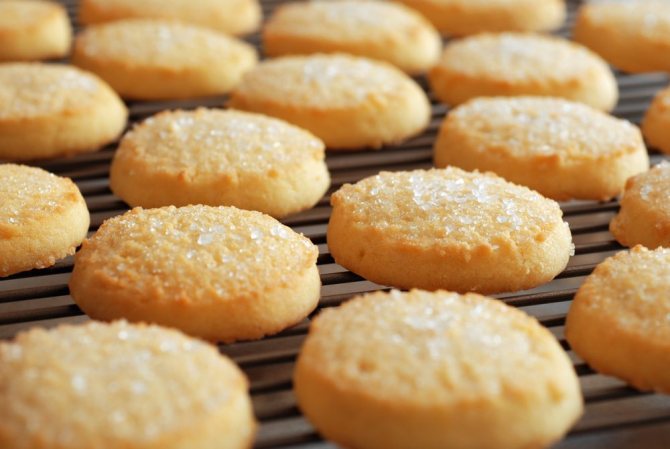
Gluten-free flour
Some newborns and mothers after childbirth develop an allergy to gluten due to hormonal changes. This is the name of gluten, contained in many grain crops (barley, wheat, oats, rye). If you neglect this phenomenon and continue to eat food with gluten, the child will develop developmental delays and mental disorders.
For celiac disease (gluten intolerance), replace flour with gluten-free flour (rice, buckwheat, corn). When introducing baked goods into your diet, follow these rules:
- In the first month after giving birth, avoid any flour products. The baby's gastrointestinal tract is still imperfect. Give him time to adapt to the new food by including only simple, healthy dishes on the menu.
- Fill your baked goods with fiber products for better digestion: apples, vegetables, cottage cheese, lean meats.
- Don't get carried away with flour to maintain your figure.
Gluten-free flour is the best solution not only for gluten intolerance. It is suitable for mothers who are overweight. Although baked goods with such flour are less fluffy, products made from it are healthier.
How to properly introduce dumplings into the diet of a nursing mother?
1. You should know that a nursing woman can eat dumplings only three months after giving birth. At this time, the baby begins to be given the first complementary foods, so his body will not notice much of a difference in the change in breast milk.
2. Dumplings should be eaten gradually. After eating a few pieces, you should monitor whether redness appears on the child’s skin. If even a minor allergic reaction is observed, then you should wait several weeks before eating dumplings.
3.Only boiled dumplings should be eaten. When fried they become very fatty. When an allergic reaction occurs in a baby, it is difficult to understand what caused it. These can be either the dumplings themselves or the butter.
4. Spices should not be added to dumplings. They can cause skin rashes not only in the child, but also in the mother. During lactation, a woman’s body is very vulnerable. He not only has to resist various infections, but also produces breast milk. In order not to add unnecessary work to the body, you should completely avoid using spices while breastfeeding.
5. It is advisable to eat dumplings with broth. Liquid will help digest food faster.
There are situations when a child may have an allergic reaction to any type of meat. Then dumplings should be completely excluded from the diet. But, if you really want to eat something like that, you can replace the dumplings with dumplings.
General rules
One of the main points in the matter of nutrition is its balance.
It is important that the food that the young mother eats contains all the vital elements to the maximum. Proteins, fats and carbohydrates in an optimal ratio, various microelements (in particular, iron, calcium, iodine), vitamins - these and many other useful substances must be included in the diet of a nursing woman
A strict diet for breastfeeding is suggested in the first month or two from the baby’s birth, since the baby’s digestive system is not yet ready to digest complex foods, and all this time the baby eats the same thing that the mother herself eats. Therefore, it is better to exclude fried foods and high-fat foods from the menu. Many people think that a nursing mother should eat for two, in theory this is true, but in practice it is just enough to add some nutritious, high-calorie dishes to the diet. The daily calorie intake during lactation reaches 2700, then, as complementary foods are introduced, this figure can be reduced.
Of the nutrients, a nursing mother should consume protein - a valuable component found in meat, fish, dairy products, and cereals. It happens that in order to better absorb one ingredient in the body, it is worth eating more foods containing the second. For example,
These are sesame seeds, sunflower seeds and pumpkin seeds. Calcium, in turn, is necessary to prevent the development of rickets in an infant and promotes proper growth and formation of bone tissue. Most of it is found in cottage cheese, milk, kefir or cheeses. Often, young children can react very sharply to cow protein; in this case, dairy products are removed from the nursing diet, and they try to leave fermented milk products. But if signs of allergy persist, then it is better to stop using such ingredients.
All new ingredients should be introduced into the diet gradually, first starting with a small piece or teaspoon of any component. After the first test, wait a pause of up to several days to see the baby’s reaction. Only after the child has accepted and tolerated the new food well, the portions are gradually increased.
You need to cook for a nursing woman using foods that prevent gas formation, otherwise the baby will have digestive problems, which will cause colic and sometimes intestinal upset.
Therefore, in the first few months, the mother should carefully monitor her diet and feed the baby only with breastfeeding or an adapted formula. Supplementary feeding is not used during this period.
The amount of the right fluid up to two liters per day will allow a nursing mother to avoid its deficiency and maintain lactation at a sufficient level.
If the baby was born through surgery, then after a cesarean section the new mother should be doubly responsible when it comes to nutrition. The female body has to recover for quite a long time after childbirth, and even more so after undergoing anesthesia. Proper nutrition during this period should be aimed at restoring the digestive system, while the caloric content of dishes should be significantly higher. You should also not forget about lactation, so for normal milk production you should eat protein foods, as well as drink more warm liquids.
Dumplings while breastfeeding: is it possible for a nursing mother in the first month and beyond?
Dumplings are a dish known in many countries around the world, loved by children and adults, including nursing women. But many young mothers don’t know if they can eat dumplings.
What beneficial and harmful substances do dumplings contain?
Traditional dumplings consist of two components: dough and meat. The main ingredient of the dough is premium wheat flour, which contains 74.2 g of carbohydrates and the following minerals:
- sodium;
- potassium;
- calcium;
- magnesium;
- phosphorus;
- iron.
The flour also contains vitamins B1, B2 and PP. The calorie content of 100 g of this product is 327 kcal. Flour of grades I and II contains slightly more minerals and vitamins, and fewer carbohydrates, but its calorie content differs from the highest grade by 1-2 units.
Despite the rich and varied chemical composition, this product contains a large amount of carbohydrates and cannot be considered completely useful for all categories of the population.
Dumplings can benefit or harm a nursing woman - the effect depends on the meat used to prepare them
The second component is the filling, which can consist of different types of meat or vegetables, fish, seafood, etc. But we will consider the classic meat filling. The benefits and harms of dumplings directly depend on what kind of meat is used in their preparation.
Any meat contains protein (building material for our cells and a source of amino acids) and fat (a source of energy). Meat products also contain the following minerals:
- iron;
- potassium;
- calcium;
- magnesium;
- phosphorus, etc.
Meat contains many vitamins, for example, B1, B2, PP.
Calorie content of dumplings
The total calorie content of dumplings depends on the components of the product. If the dough is prepared traditionally, it includes the following components:
- water (less often milk);
- flour;
- eggs;
- salt.
In this case, the meat filling can vary from very fatty to dietary. Additional additives in the form of seasonings, vegetables, and herbs are also important. And if we talk about a store-bought product, then the filling probably contains the following additives:
- soy;
- ground bones;
- animal entrails;
- semolina.
The more animal fat is added to the filling, the more energy-intensive the finished product will be. Thus, classic Siberian dumplings (with beef) contain from 169 kcal per 100 g of product.
In general, it is difficult to calculate the calorie content of homemade dumplings - it depends on the composition of the minced meat.
Manufacturers produce the factory product according to standards, indicating on the packaging the composition and amount of energy value per 100 g of product.
Since January 1, 2010, a production standard for semi-finished meat products in dough has been in effect in Russia. In the filling of a category A product, minced meat should be over 80%, B - 60-80%, C - 40-60%, D - 20-40%, D - less than 20%. Additional ingredients may include soy, flavorings, and semolina.
Dumplings made from chicken, rabbit, lean beef, and veal are considered less nutritious, with a calorie content of 110 kcal or more. The most high-calorie dishes are considered to be products made from pork meat, containing up to 300 kcal, and lamb, which contains up to 400 kcal per 100 g of product. The nutritional value of meat also depends on the part of the animal used in cooking
In addition to the filling and dough, the calorie content of a dish is influenced by the method of preparing the product . The most gentle methods are boiling, baking and the steaming method.
A small part of the fat will evaporate or go into the water, but this will not significantly change the overall calorie content of the dish.
Frying almost doubles the energy value of the product and is the most merciless cooking method for the gastrointestinal tract, liver, and kidneys.
The impact of dumplings on the body of a nursing mother and child, their benefits and harms
Producing breast milk is a burden on the body, so a nursing woman needs an additional 300–500 kcal. Dumplings are a hearty dish with high nutritional value, so they are able to replenish the energy costs of a young mother’s body.
But we can talk about significant benefits only in the following cases:
- with independent and high-quality production of the product;
- if the woman does not have any degree of obesity and gastrointestinal diseases;
- with good tolerance of the dumpling components by mother and child.
Factory-produced dumplings are not recommended for a nursing mother to eat, because it is difficult to find a quality product on the modern market of semi-finished products. Manufacturers often add harmful components to the filling - potential allergens that can cause digestive upset in women and children.
In addition, the benefits of homemade dumplings are controversial. In an age of limited physical activity and the use of machines to do housework, a woman does not need to eat high-calorie foods.
If a nursing mother is underweight and in excellent health, then she can afford dumplings 1-2 times a week. However, according to nutritionists, the combined consumption of carbohydrates and fats leads to an increase in appetite and rapid weight gain.
In addition, dumplings are heavy food for the body.
A nursing woman needs to eat 100 g of meat daily, but the product must be of high quality and with a minimum amount of fat. It is recommended to start with 40–50 g. The preferred methods of cooking are everything except frying.
Rabbit and turkey are recognized as the healthiest types of meat for a nursing mother. They have many advantages:
- easy to digest;
- do not cause allergic reactions;
- have low calorie content;
- contain little cholesterol.
Unfortunately, these types of products are difficult to find on the market and their prices are high. Lean beef and chicken are more accessible on the market and at a cost.
How dumplings affect breast milk
Breast milk practically does not change its composition throughout the entire period of lactation. It contains the required amount of proteins, fats, carbohydrates and other substances.
According to lactation consultants, no food affects the composition and quality of milk - a woman needs it to replenish the costs of its production.
Human milk is produced from blood and lymph, and not from the contents of the stomach, so foods and dishes cannot affect its composition
Are dumplings allergenic?
Dumplings are a multi-component product. If a woman has an individual intolerance to any substance included in this dish, then with a high probability it can be passed on to the child, since mother and breastfed baby have the same microflora.
In cases of regular abuse of semi-finished products, and even store-bought ones, harmful substances, accumulating in a woman’s body, can negatively affect the child.
Occasional consumption of homemade dumplings in reasonable quantities will always benefit both mother and baby.
If a dish is prepared according to all the canons of a healthy diet, then it is not a highly allergenic product.
When can dumplings be introduced into a mother’s diet and how to do it correctly
There are two approaches to feeding a nursing mother after childbirth:
- eat the same as during pregnancy;
- Gradually introduce different foods into your diet.
The first approach involves following the basic rules of a healthy diet during pregnancy, excluding the following foods:
- carbonated drinks;
- fast food;
- semi-finished products;
- smoked meats;
- canned food;
- alcohol, etc.
If a woman ate dumplings during pregnancy, she can safely eat them after giving birth. But the baby, especially in the first months of life, already experiences enormous stress on the digestive and other systems.
The second approach is based on following a gentle diet for 2–4 weeks after birth. Starting from the second or third month of the baby’s life, depending on her health, a woman can gradually introduce dumplings into the diet, carefully monitoring the baby’s reaction.
The tactics look like this: on the first day, the woman eats 2-3 dumplings, and over the next two days observes the child’s reaction. If negative manifestations in the form of a rash, redness of the skin or tummy problems are not noticed, then you can slightly increase the number of dumplings you eat.
In this way, it will be possible to gradually bring them to a full portion.
Is it possible to eat dumplings in the first month?
The nutrition of a nursing mother in the first month after childbirth depends on the following features:
- the course of pregnancy and childbirth;
- organizing the first feeding;
- general well-being of the woman and the newborn.
Taken together, these criteria, as well as the nutritional approach chosen by a nursing woman on the recommendation of a doctor, will shape her diet.
Some pediatricians advise mothers to take care of the baby's immature digestive system and not eat heavy foods during the first month.
Making quality homemade dumplings with the whole family can become a tradition
If you don’t have time to make dumplings, then you can turn it into a tradition - on a day off, all family members sit down at a common table and prepare homemade semi-finished products.
How much should you use?
Doctors advise eating a serving of 10-15 dumplings once or twice a week with a similar amount of fiber-containing foods - greens, vegetables, etc. These foods will help you digest the dumplings easily.
: principles of preparing dumplings
If you are overweight and have problems with the gastrointestinal tract, it is better for a nursing woman to refrain from eating dumplings. Other mothers can sometimes afford to enjoy a homemade dish.
Since the digestive system of a newborn is immature, it is advisable for a woman to give up dumplings for the first month after giving birth, and then introduce them gradually, starting with 2-3 pieces.
- Elena Mann
Source: https://orebenke.info/posle-rodov/pitanie-kormyashhej-mamy/mozhno-li-kormyashchey-mame-pelmeni.html
The benefits of nectarines for nursing women
Nectarines, along with peaches and apricots, are one of the most popular and delicious summer fruits. They are eaten fresh, added to fruit salads, baked in the oven or made into jam. But the healthiest thing to eat is fresh nectarines, since they contain the maximum amount of vitamins and beneficial microelements.
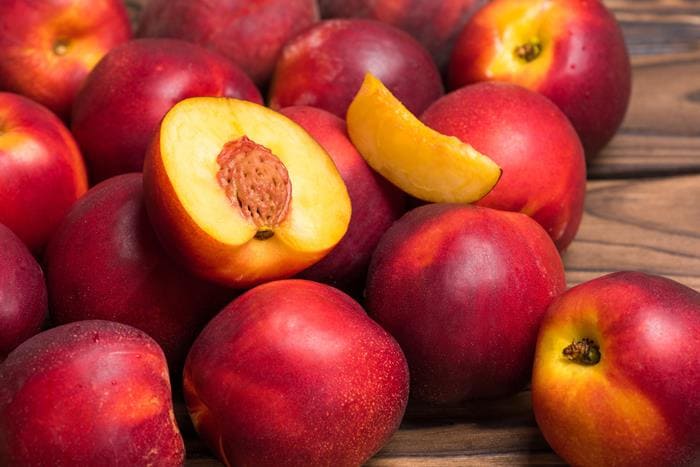
Ripe nectarines
The chemical composition of the fruit looks like this:
- Vitamins: A, beta-carotene, group B (except B12), C, E, K, PP;
- Minerals: potassium, calcium, magnesium, phosphorus, iron, manganese, copper, zinc;
- Cellulose.
This composition has the following beneficial effects on the body of a nursing mother:
- improves digestion;
- has an antioxidant effect;
- promotes weight loss;
- increases visual acuity;
- strengthens the immune system;
- normalizes blood glucose levels;
- has a positive effect on the activity of the cardiovascular system;
- fights cancer cells;
- improves the condition of hair, nails and skin.
It should be remembered that you can eat nectarines during breastfeeding only in small quantities. Otherwise, the child may experience an allergic reaction.
What's good about dumplings for breastfeeding?
If we take the composition of homemade dumplings, then this is a quite healthy and quite acceptable product for a nursing mother, because the dough made from wheat flour contains a lot of fiber and a number of minerals and vitamins, such as:
- copper,
- magnesium,
- zinc,
- iron,
- phosphorus,
- vitamin PP and B vitamins.
Protein is valuable in meat filling.
Dumplings are considered a product that does not cause allergies. It is better to cook them from lean meats without adding spices.
Pediatricians allow dumplings to be included in a nursing mother’s diet from the fourth week of the baby’s life. Read about how to properly introduce this dish into your diet in the article Nutrition for a Nursing Mother>>>
Recipes for baked goods allowed during breastfeeding
Homemade baking is not difficult. There are many delicious recipes allowed for breastfeeding.
Yeast-free buns and pies
The dough for buns and pies is prepared with kefir. It turns out no less tasty and fluffy than yeast. For it you will need:
- 1 tbsp. kefir;
- 2 tsp. granulated sugar;
- 2 tbsp. l. vegetable oil;
- 0.5 tsp soda;
- 2.5 tbsp. flour;
- 2 pinches of salt.
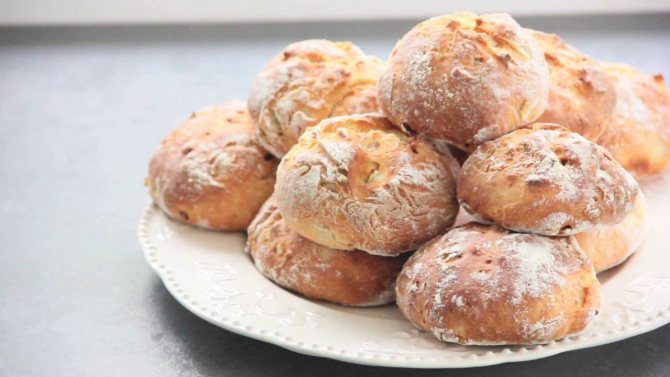
The pie dough is prepared as follows:
- Heat kefir in a water bath.
- Add butter, salt, sugar.
- Add flour and mix well.
- Knead the dough.
- Divide the soda into 3 parts.
- Roll out the dough into a layer 1 cm thick.
- Sprinkle it with 1 part baking soda.
- Fold in half, sprinkle again. Repeat one more time.
- Set the dough aside in a warm place for 40 minutes.
- Form pies and bake in the oven for 20-30 minutes at 220 degrees.
Pizza
Pizza can be an excellent baking solution. However, you should not use mushrooms, sausage, mayonnaise and other allergenic ingredients as filling. To prepare the dough you will need:
- 1.5 tbsp. water;
- 2 tbsp. l. vegetable oil;
- 2 pinches of salt;
- 300 g flour;
- 1-2 tbsp. sour cream.
Preparation:
- Mix water with sunflower oil.
- Add salt.
- Add flour and knead the dough.
- Leave it on for 10 minutes.
- Roll out the layer and brush it with sour cream so that the product is not dry.
- Place the dough on a baking sheet and place the filling on top.
- Bake at 220 degrees for 15-20 minutes.
Baking during lactation can be not only tasty, but also healthy. To do this, prepare the dough using as little eggs and flour as possible. Discard the yeast, add gluten-free flour and bran if necessary. Give preference to homemade products made from quality products, and then you can enjoy fragrant pies, cookies, and muffins at any time.
The right dough
Flour
For dumplings, yeast-free dough that does not contain sugar is kneaded.
To prepare it, it is very important to use high-quality flour.
In this case, you will have to refuse the highest grade. It is obtained from parts of grains containing large amounts of starch, and some manufacturers can artificially whiten it using special additives. Such impurities can cause serious harm to the digestion of a woman and her child.
Eggs
It is also better to check the freshness of eggs in advance. This is easy to do, just put them in water. Floating eggs should not even be broken; this effect is due to the accumulation of hydrogen sulfide, which is produced when the product spoils. If the egg lies calmly at the bottom of the container, you can safely use it.
The dough for dumplings should be elastic, easy to roll out and not sticky when formed. There are several recipes, but it is advisable for a nursing mother to stick to the simplest and most common option.
Dough recipe
Half a glass of cold boiled water is poured into the prepared container. Then one egg is broken, a pinch of salt and half a glass of flour are added. Once these ingredients are mixed, you can gradually add another one and a half cups of flour.
There is no need to rush, mixing slowly helps achieve better elasticity. You need to finish kneading the mixture with your hands on a floured table.
The finished dough should be sticky, but still easy to handle. After it is ready, cover it and leave for 30-60 minutes. “Rested” dough will not shrink when rolled out. And if you add a drop of vegetable oil to it, the dough becomes more pliable.
Homemade provencal recipe
For proper Provençal you will need the following products:
- sunflower and olive oil – 100 ml each;
- quail egg yolks – 6 pcs.;
- sugar and salt - 0.5 tsp each;
- medium lemon
Cooking algorithm:
- Beat the yolks with sugar and salt using a blender until the mixture turns white.
- After this manipulation, pour in the oil in a thin stream, without stopping whipping (the mass begins to become thicker and creamier).
- Now add lemon juice and stir everything again with a whisk.
If the mayonnaise turns out to be too thick, you can add a couple of tablespoons of cold boiled water and stir everything again until smooth.
Methods of use
Cloves are used dry and as an oil. To prepare decoctions, take the buds. The method of application depends on the type of disease.
- For diarrhea, as well as inflammatory processes. Consumed dry, chewing the buds. Also added to tea.
- For a cold. Add to drinks. The flowers can also be chewed dry.
- With hiccups. The buds have an antispasmodic effect. The spice must be chewed for a few seconds.
- For influenza, ARVI. To strengthen the immune system, brew a decoction. For 1 liter of water, 6-7 clove buds are enough.
- For toothache, stomatitis, gingivitis, gum inflammation. Accelerates regeneration. Relieves pain. For treatment you need to chew the flowers.
- For hypotension. Increases blood pressure, stimulates the nervous system.
- For dermatitis, cuts, bruises. Clove-based ointments are used for treatment. The plant normalizes the condition of the skin and enriches the skin with nutrients. Oils are used for acne.
- For cellulite. Cloves have a warming effect.
- For headaches. Ground cloves are combined with camphor oil and rubbed with the whiskey mixture.
Why can't you eat it while breastfeeding?
The use of this sauce has a detrimental effect on the health of women during breastfeeding. And that's why.
Addictive
It’s not for nothing that flavor enhancers and additives are considered “food drugs.” They can cause persistent addiction. Food that is not seasoned with mayonnaise becomes bland and tasteless. A person begins to notice that eating is impossible without the treasured pack of sauce, but he can no longer stop, he wants more and more.
Overweight
The fat content in the finished product is simply off the charts. If consumed daily, obesity is just around the corner. Plus, people eat much more food topped with mayonnaise, because it tastes better. There is a light sauce, its fat content ranges from 20 to 30%, but this product is even more stuffed with chemicals than its high-calorie counterpart.
Development of diseases
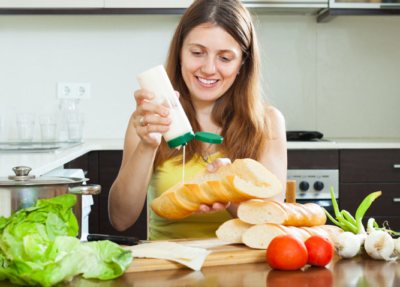
The calorie content of mayonnaise leads not only to weight gain, but also to a number of other diseases, for example:
- heart problems;
- atherosclerosis;
- gastritis;
- metabolic disorders;
- the appearance of problems with skin and hair;
- the formation of blood clots (due to the impact of fat in the vessels, cholesterol plaques form).
What are the benefits of figs for breastfeeding? How to properly introduce it into the diet?
Harmful components
To reduce production costs, unscrupulous companies deliberately reduce the cost of raw materials for the sauce. For example:
- when palm or rapeseed oil is digested, toxic breakdown products may be released;
- emulsifiers cause intoxication;
- dietary E-supplements increase the risk of cancer;
- mustard powder retains fluid in the body, causing swelling;
- Flavor enhancers contribute to overeating and weight gain.
Tip: Read the product ingredients carefully before purchasing. If you look closely, even “natural” mayonnaise contains the same harmful components as regular mayonnaise.
Dumplings while breastfeeding: can you eat them in the first or second month?
Dumplings during breastfeeding are a very controversial product. During the lactation period, women try to follow a strict diet so as not to provoke colic in the child. But, if you approach the purchase of a product responsibly, you don’t have to give up using it.
Features of eating dumplings while breastfeeding
During breastfeeding, a woman needs to carefully monitor her diet. After all, the baby’s digestive function depends on it. Along with milk, substances can enter his body that cause bloating and diarrhea.
But breastfeeding women are not always able to find extra time to cook. In this case, semi-finished products come to the rescue. Dumplings during breastfeeding can be introduced into the diet no earlier than a month after birth.
This should be done gradually, observing the child's reaction.
https://www.youtube.com/watch?v=FRaUmu2AlZY
Dumplings are extremely undesirable for a nursing mother in the first month. In this case, the risk of developing digestive disorders in the child increases. In some cases, an allergic reaction occurs.
This negatively affects the baby's condition. At the same time, the female body needs protein, the source of which is the filling of dumplings. But we should be talking about high-quality specimens with the most natural composition.
After all, category D dumplings consist of no more than 20% meat.
To make the dish more filling, it is served with broth. Attention! The shelf life of frozen homemade dumplings is 1 month, and store-bought ones can reach 6 months.
Can a nursing mother have dumplings?
Dumplings are a delicious dish made from dough and minced meat. They perfectly satisfy hunger and quickly replenish the body's energy reserves. Dumplings are not prohibited when breastfeeding.
But a lot depends on their composition and freshness. Poor quality dumplings can cause food poisoning or colic in a child.
Experts recommend that breastfeeding women eat dumplings prepared with their own hands.
Can a nursing mother have homemade dumplings?
The main advantage of homemade dumplings is their natural composition. It contains no flavor enhancers, preservatives or stabilizers. The filling can be made from any type of meat. The most common options are:
- rabbit meat;
- turkey;
- pork;
- chicken;
- veal.
The dough is prepared from wheat flour with the addition of eggs, salt and vegetable oil. For the digestive system, the combination of meat and dough is considered difficult. Therefore, it is necessary to add onions, carrots or cabbage to the minced meat.
Fiber in vegetables speeds up the process of digesting food. The only disadvantages of homemade semi-finished products are the long preparation process and shortened shelf life.
But the benefits of the product more than compensate for these shortcomings.
We recommend reading: The benefits and harms of leeks
Is it possible for nursing mothers to buy dumplings?
Factory-produced dumplings are also acceptable to eat while breastfeeding. But it is important to pay attention to their category and composition. It is advisable for nursing women to buy a product of category A or B. It contains at least 60% meat.
Semi-finished products of categories B, D and D are inferior to it in terms of the amount of protein, and therefore do not have high nutritional value. In addition, they may contain mechanically separated meat, bones and soy protein. When choosing purchased semi-finished products, you also need to look at the content of various additives and flavor enhancers.
The fewer there are, the better it will be for the health of the woman and her child.
Semi-finished turkey or rabbit products are considered the most expensive. They are also classified as more suitable varieties for the lactation period. The main advantage is the low calorie content and reduced risk of developing allergies. Such dumplings are much less common on sale.
High-quality semi-finished products should not stick together or fall apart during cooking.
When can a nursing mother eat dumplings?
Dumplings can be consumed during breastfeeding in the second month. But you must follow certain rules. The product is introduced into the diet gradually, in small portions. In total, you are allowed to eat no more than 10-15 products per day.
It is advisable that their consumption does not occur in the evening hours. This will cause a feeling of heaviness in the stomach. But this product is not suitable for daily use.
In addition, it is considered very high in calories, which slows down the process of weight loss after childbirth.
Rules for eating dumplings during breastfeeding
If you approach the use of dumplings wisely, they will not have a detrimental effect on the health of the woman and her baby. First of all, you need to pay attention to the composition of the product. If a child is allergic to chicken eggs, their use should be avoided.
An alternative option in this case could be quail eggs. The minced meat should not be too fatty. Therefore, it is advisable to give preference to beef or turkey filling. The product should not contain soy protein, as it is considered a potential allergen.
It is also advisable to abandon too cheap varieties of dumplings.
The semi-finished product must be well cooked. Half-raw meat is a source of parasitic diseases that pose a serious health hazard.
Breastfeeding experts do not recommend adding fatty sauces or mayonnaise to dumplings. You can use sour cream as a replacement.
If you prepare the product yourself, you should avoid hot seasonings and garlic. They can make breast milk taste bitter, which can cause your baby to wean off the breast.
On the contrary, the use of dill when cooking is encouraged, since it reduces the likelihood of gas formation.
Useful tips
To eliminate possible health complications and get the maximum benefit from food, you need to be responsible when preparing your diet.
It is advisable to first discuss the possibility of using the product with your doctor. He will give individual recommendations, taking into account the quality of lactation and the child’s health characteristics.
During breastfeeding, it is recommended to focus on the following tips:
- purchased semi-finished products must be replaced with homemade ones;
- It is not advisable to consume the dish more than once a week;
- when preparing a diet, it is necessary to monitor the reaction of the child’s body;
- dumplings should be eaten with vegetable salad for better protein absorption;
- Before preparing a dish, you need to check the expiration date;
- semi-finished products are eaten freshly prepared, hot;
- It is forbidden to use acetic acid, mayonnaise and ketchup as a dressing for dishes.
Important! To increase the fat content of breast milk, you need to eat a semi-finished product with pork.
The benefits and harms of potatoes
Potatoes can be eaten in the first week after the birth of the baby. The main thing is that the product is in an easily digestible form, without spices and fats. Potatoes will help regulate intestinal motility, improve bowel movements, and avoid increased gas formation.
Composition and beneficial properties of potatoes
Potatoes contain ascorbic acid, vitamins B3, B6, B12, starch, which is converted into glucose. With regular consumption of the product, the body is saturated with both vitamins and minerals. Potassium removes waste and toxins, magnesium supports the functioning of the endocrine and nervous systems, phosphorus regulates the activity of the liver and brain, improves memory and coordination of movement.
Benefits of vegetables for breastfeeding:
- starch reduces the level of bad cholesterol, is a source of carbohydrates to release energy for the body;
- tyrosine lowers blood pressure, helps cope with headaches, weakness, and malaise;
- potato broth - a remedy for getting rid of depression, a natural energy drink;
- potatoes cleanse the skin of acne, relieve irritation, redness, peeling, make nails and hair firm and elastic;
- it improves the condition of the digestive tract, normalizes metabolism;
- Potatoes improve the condition of the skin after burns and injuries;
- fresh potato juice is indicated for diseases of the heart, blood vessels, and to stimulate intestinal motility.
Potatoes are a filling and healthy product. With regular use of the vegetable, the mother’s body will recover more quickly after childbirth, and the baby will grow and develop properly. The calorie content of the vegetable is 77 kcal per 100 g.
Potato damage
Potatoes can become a source of poisoning to the body due to the content of solanine, which accumulates in the tubers of the plant. The presence of a toxic substance can be determined by the green veins that are present in the finished product. The harmful component also accumulates during product storage.
Potatoes contain a lot of carbohydrates, which can cause flatulence and irritation of the esophageal mucosa. Dishes containing fatty potatoes can cause constipation in both mother and baby.

